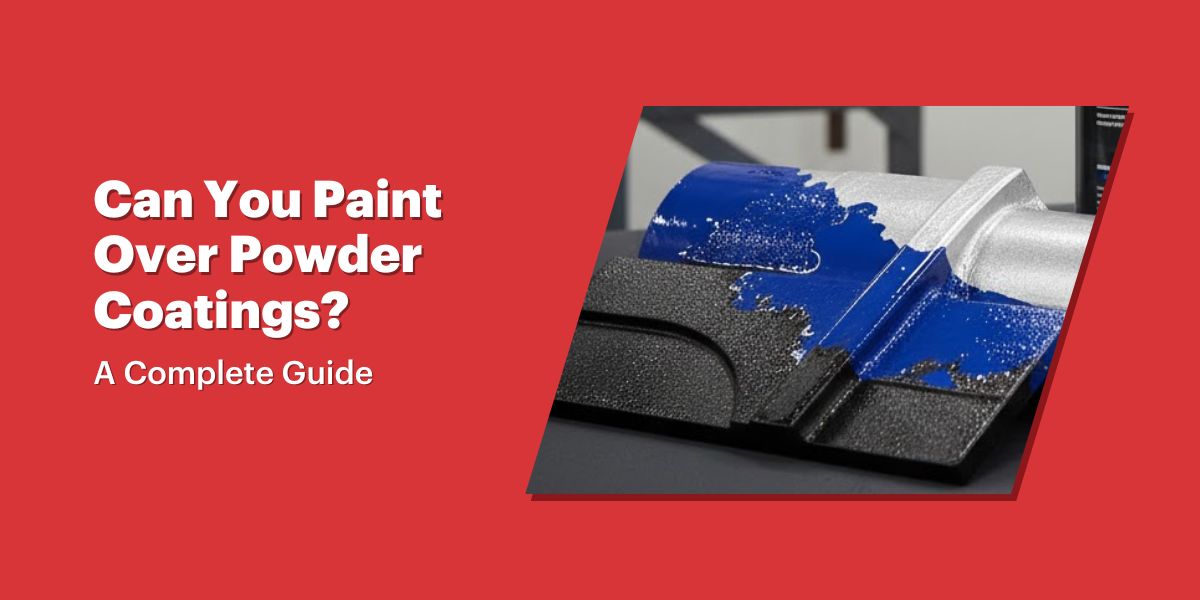It’s a common question we hear from facility managers, fabricators, and DIY enthusiasts is can we paint over powder coating?
The short answer is yes, you absolutely can.
However, the critical detail that separates a professional, long-lasting finish from a peeling, failed one lies not in the paint itself, but in the preparation. Paint over powder coating surface is a perfectly viable strategy for repairs, color changes, or customizations, but it demands a specific process.
At Intech, with our expertise in surface engineering, we’re breaking down exactly how to do it right. This guide will walk you through the “why,” the “how,” and the crucial pitfalls to avoid.
Why Would You Paint Over a Powder Coating?
Powder coating is renowned for its durability and finish, so why cover it up? Several practical reasons make this a common request:
Color or Branding Updates: Refreshing the color of machinery, railings, or architectural elements to match new branding or design schemes.
Damage Repair: Efficiently fixing chips, scratches, or fading without the cost and downtime of completely stripping and recoating the entire part.
Adding Custom Details: Incorporating logos, safety markings, or intricate designs that are easier to achieve with liquid paint.
Cost-Effective Refurbishment: Extending the life of an existing, structurally sound powder coat by adding a new protective layer.
The Golden Rule: Preparation is Everything
The primary challenge is adhesion. A powder coated surface is designed to be tough, smooth and chemically resistant everything that makes it difficult for new paint to stick. Bypassing proper prep will guarantee a failure.
Intech’s proven, step-by-step process for preparing a powder-coated surface for painting:
Step 1: Deep Cleaning
The goal is a perfectly clean, dry and grease-free surface.
Method: Use a high-quality degreaser or a mild solvent (like mineral spirits) and a soft-bristled brush or cloth.
Pro Tip: For large items, a power washer can be effective, but ensure the surface is completely dry before moving to the next step. Any residue will prevent adhesion.
Step 2: Abrading the Surface (The Most Critical Step)
You must create a “profile” or microscopic roughness for the new paint to mechanically bond to.
Method: Hand-sand the entire area to be painted using 220 to 400-grit sandpaper. The goal is to uniformly dull the entire glossy surface, not to sand through the coating.
Pro Tip: A grey scuff pad is also an excellent tool for this. For large, flat surfaces, a dual-action (DA) sander can save time. Avoid aggressive sandblasting unless the coating is severely damaged, as it can remove too much material.
Step 3: Final Wipe-Down
After sanding, the surface will be covered in fine dust that will ruin the finish.
Method: Use a lint-free cloth dampened with a cleaner like isopropyl alcohol or a dedicated wax and grease remover. This provides a final decontamination.
Step 4: The Adhesion Test (Primer Spot Check)
Before priming the entire piece, conduct this simple test to confirm your prep work was successful.
Method: Apply a small spot of your chosen primer to the sanded surface. Let it dry for the recommended time (usually 20-30 minutes). Then, try to wipe it off with a cloth dampened with a mild solvent. If it smudges or lifts, the surface isn’t ready, and you need to return to sanding. If it remains intact, you’re clear to proceed.
Selecting the Right Materials for the Job
Not all paints and primers are created equal. Using the wrong products is a recipe for failure.
Primer: This is your bridge. You need a high-quality bonding primer designed for non-porous surfaces. Epoxy-based primers or self-etching primers are excellent choices as they provide a tenacious grip.
Topcoat (Paint): The best results come from paints known for their durability and adhesion. Two-part epoxy paints or urethane-enamel paints (like those used in automotive applications) are ideal. They are chemically resistant and will form a hard, protective shell.
Geofencing a Solution: When to Call a Professional Like Intech
While the process is straightforward, it requires time, patience, and the right environment. If your project involves any of the following, it’s time to contact a local professional:
- Large or Complex Geometries: Ensuring even coverage on large industrial equipment or parts with complex shapes is challenging.
- Critical Performance Needs: If the part is exposed to harsh weather, chemicals, or heavy wear, a professional finish is non-negotiable.
- Lack of Proper Facilities: Achieving a flawless finish with liquid paint is difficult without a controlled, dust-free environment.
For businesses and clients in the Delhi, Banglurue, kolkata area, Intech provides local, expert powder coating repair and repainting services, ensuring a factory-quality finish that stands up to your operational demands.
A Viable Strategy with a Non-Negotiable Process
So, can you paint over powder coatings? Yes, successfully. The key takeaway is that the longevity of the new finish is directly proportional to the quality of the surface preparation.
By meticulously cleaning, scuff-sanding, and using the correct primer and paint, you can breathe new life into powder-coated assets. However, for mission-critical applications, partnering with an expert like Intech guarantees a durable, professional result that protects your investment for years to come.
Don’t gamble with adhesion. Contact the Intech team today for a consultation on your refinishing project.


